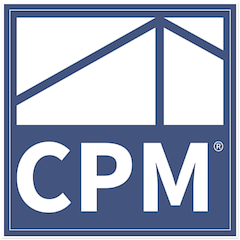Current Rental Market Conditions for Single Family Homes in South Florida
Miami Dade, Broward and Palm Beach Counties

The South Florida rental market has always been a dynamic and sought-after segment, particularly for single-family homes in Palm Beach, Broward, and Miami-Dade counties. Over the past year, these markets have experienced significant changes due to various economic, social, and environmental factors. Understanding these trends is crucial for investors, landlords, and tenants alike. In this blog, we’ll delve into the latest statistics on asking rents, actual contract rents, and the factors influencing these changes.
Overview of the South Florida Rental Market
South Florida, known for its desirable weather, cultural diversity, and economic opportunities, has consistently attracted both domestic and international renters. The rental market in this region is influenced by its vibrant tourism sector, strong job market, and a growing influx of new residents seeking a better quality of life.
Palm Beach County
Current Market Trends
Palm Beach County has seen a notable increase in demand for single-family rental homes. The county's appeal lies in its mix of luxury and affordability, offering something for everyone from retirees to young professionals.
- Asking Rents: According to the latest data, the average asking rent for single-family homes in Palm Beach County stands at around $3,200 per month. This reflects a year-over-year increase of approximately 8%.
- Contract Rents: Actual contract rents, which are the rents agreed upon in lease agreements, have also risen, averaging about $3,000 per month. This shows that while landlords are optimistic, they often settle slightly below their asking price, a common trend in a competitive market.
Influencing Factors
Several factors contribute to the rising rental rates in Palm Beach County:
- Population Growth: The county's population continues to grow as people migrate from higher-cost regions in the Northeast and Midwest.
- Economic Stability: A robust job market, especially in sectors like healthcare, finance, and technology, attracts more renters.
- Quality of Life: Excellent schools, parks, and a high standard of living make Palm Beach County an attractive place to live.
Broward County
Current Market Trends
Broward County, centrally located between Miami-Dade and Palm Beach counties, serves as a crucial hub for renters seeking a balance of urban and suburban living.
- Asking Rents: The average asking rent for single-family homes in Broward County is currently around $3,000 per month, representing a 6% increase from the previous year.
- Contract Rents: Actual contract rents average approximately $2,850 per month. The gap between asking and contract rents suggests strong but slightly tempered demand.
Influencing Factors
The rental market in Broward County is shaped by:
- Housing Supply: While there has been an increase in new construction, the supply of single-family homes remains tight, driving up prices.
- Economic Drivers: Broward's diverse economy, which includes strong retail, entertainment, and professional services sectors, supports a stable rental market.
- Lifestyle Appeal: Broward offers a mix of urban amenities and suburban tranquility, attracting a wide range of renters.
Miami-Dade County
Current Market Trends
Miami-Dade County, known for its cosmopolitan lifestyle and international appeal, has one of the most dynamic rental markets in South Florida.
- Asking Rents: The average asking rent for single-family homes in Miami-Dade County has reached approximately $3,500 per month, reflecting a 10% increase over the past year.
- Contract Rents: Actual contract rents are slightly lower, averaging around $3,300 per month. The high demand and limited supply often lead to competitive bidding, pushing up both asking and contract rents.
Influencing Factors
Key factors influencing the rental market in Miami-Dade County include:
- International Demand: Miami’s status as a global city attracts international renters, particularly from Latin America and Europe.
- Economic Opportunities: The county's diverse economy, encompassing finance, international trade, tourism, and technology, provides ample job opportunities.
- Cultural and Lifestyle Attractions: Miami's vibrant arts scene, nightlife, beaches, and cultural diversity make it a highly desirable place to live.
Comparative Analysis
When comparing the three counties, several trends emerge:
- Rent Growth: Miami-Dade leads in both asking and contract rent growth, followed by Palm Beach and Broward. This is due to Miami's international appeal and economic opportunities.
- Demand vs. Supply: All three counties face a supply shortage of single-family homes, pushing rents higher. However, Broward's moderate growth suggests a more balanced market compared to the high-demand markets of Palm Beach and Miami-Dade.
- Quality of Life: Each county offers unique advantages, with Palm Beach appealing to those seeking a quieter, luxurious lifestyle, Broward attracting those wanting a balance of urban and suburban living, and Miami-Dade drawing individuals looking for a vibrant, cosmopolitan environment.
The rental market for single-family homes in South Florida is robust and growing, driven by population growth, economic opportunities, and lifestyle preferences. For investors and landlords, understanding these trends and statistics is vital for making informed decisions. For renters, being aware of the market dynamics can help in negotiating better lease terms. As the market continues to evolve, staying updated with the latest data will be essential for all stakeholders involved.
Share this post













